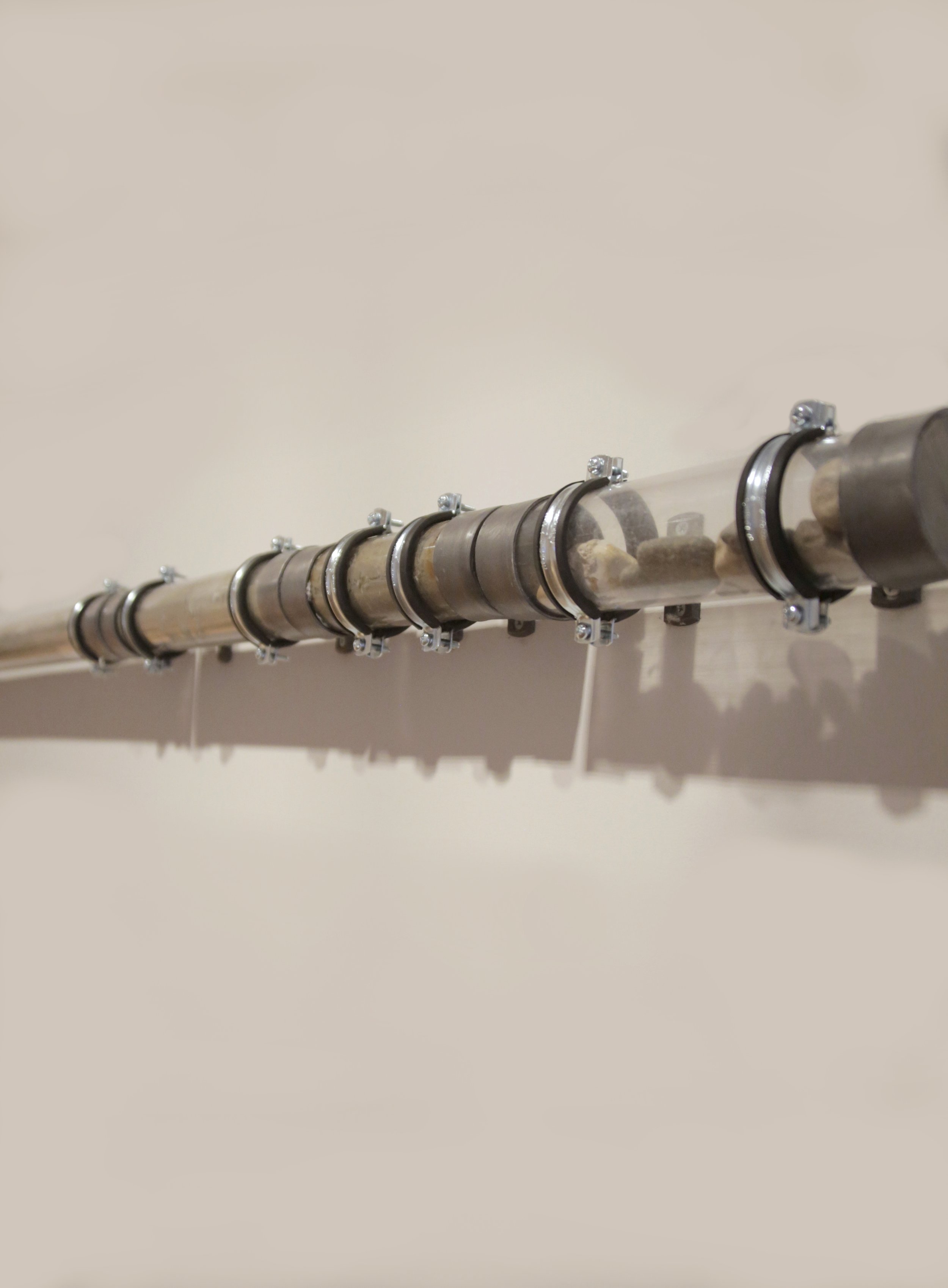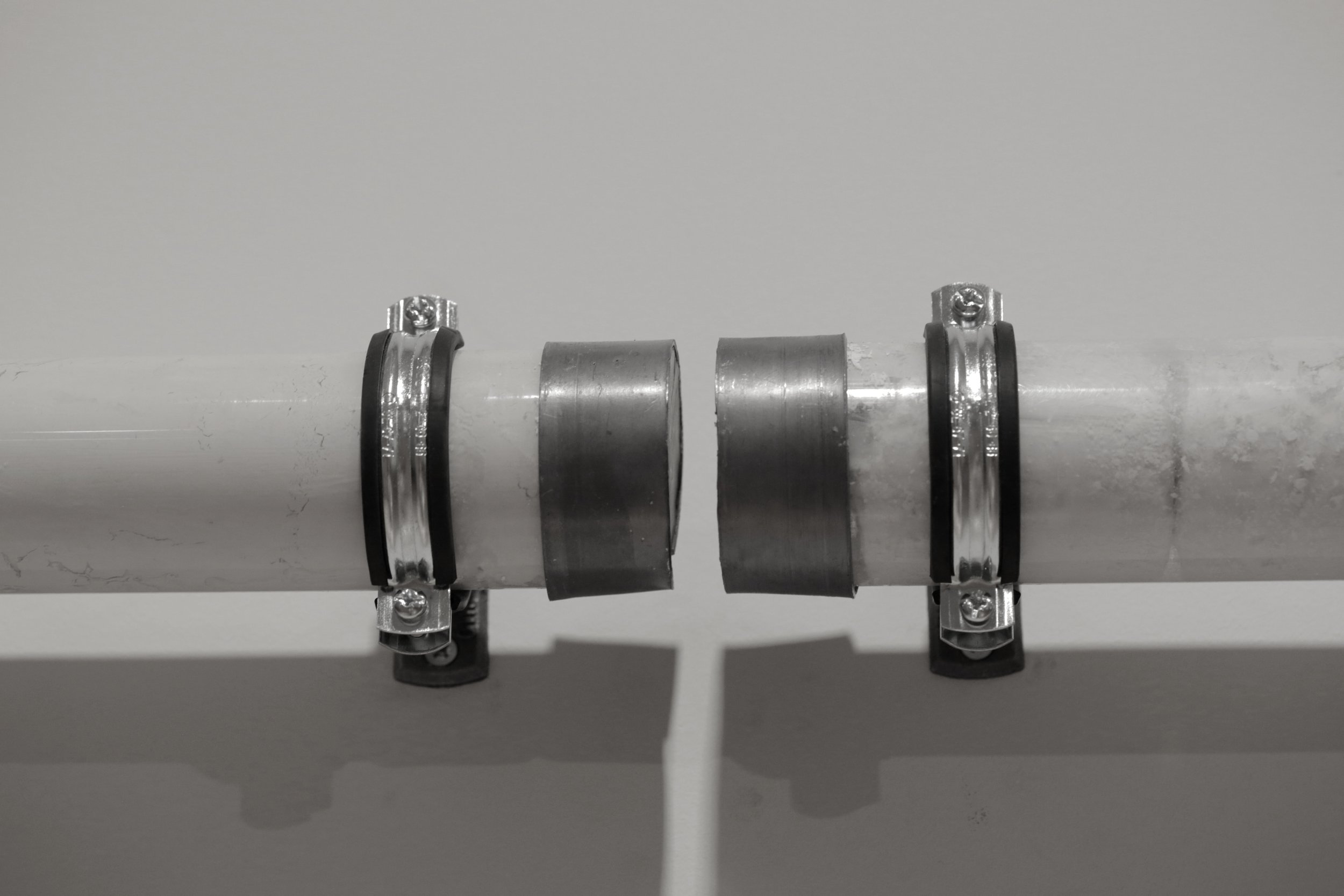
Half - Life 7.5 meters of Irish Sea seabed core, fabricated lead caps 2025
In 1998, the Irish Times reported that “there is more radioactive plutonium in the sediments off the Sellafield plant in the Irish Sea than at the underwater Russian Novaya Zemlya nuclear weapons test site, according to Greenpeace.” half-life brings together geological cores – cylindrical samples of sediment and rock – drilled from the seabed of the Irish Sea and strips of lead. Lead is used for shielding in x-ray machines, nuclear power plants, labs, medical facilities, military equipment, and other places where radiation may be encountered. Assembled end-to-end, these cores contain traces of oil, mud, clay, gravel, sand, chalk and stone that give clues about the historical and contemporary subsea environment. They bear witness to the 1957 Sellafield disaster, one of the worst nuclear accidents in world history, when a fire at the nuclear reactor in Cumbria released radioactive fallout across the UK and Europe, leading to fatal cancer cases and environmental harm. Beyond accident, during the same period, companies were dumping radioactive and industrial waste in a trench in the Irish Sea, approved by the British government. In the extended temporalities of radioactive decay, bodies and environments become repositories of industrial pollution and its enduring impacts.


